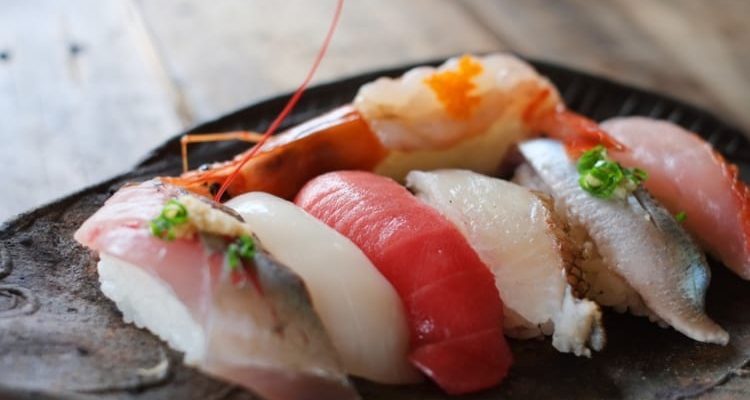When you say Japanese cuisine, most people automatically think sushi and sashimi. But, if you visit the world’s top Japanese restaurants, you will find that the menu showcases a vast variety of non-sushi dishes.
In Japan, every region even boasts of its own version of popular non-sushi offerings. For instance, if you go to Hokkaido during the spring, you will likely be recommended to try butter ramen. It has thin slices of soft roasted pork, sweet corn kernels, and of course, butter.
A particular version of this Hokkaido signature ramen even throws in large scallops to further add to the rich and buttery consistency of the broth. This is perfect for those who actually enjoy seafood.
So, if you are wont to think that eating Japanese is just going to be the usual “the best that the sea has to offer,” think again. A world-class Japanese restaurant can easily treat you to a world of new and refreshing flavours. Are you ready to expand your knowledge of Japanese cuisine and perhaps find new favourites to order often in the future? Here are six tasty dishes to try.
1. Sukiyaki
Sukiyaki is a Japanese meat dish that has risen to global popularity in recent years. What many love about it is how thin the slices of beef are and how the sweet seasoning plays up the lovely texture of the beef.
This dish also showcases the high quality of eggs from Japan in which the thin slices of beef are dipped. Pair this with rice, and you get a greatly filling meal. If you want the best sukiyaki, ask for premium Matsusaka beef because it has the best marbling, which is responsible for the delightful texture and flavour.
2. Shabu-shabu
Again, the star of this dish is a plate of thinly sliced beef. To cook the meat, you boil stock in a clay pot. Swish the beef in the stock until it loses its red colour. Afterwards, dip the beef in sesame oil or a citrus-based creamy sauce.
You can eventually add vegetables to the stock for a heartwarming hotpot. This is a dish to enjoy on a cold night with your friends. You get to do all the cooking, which means that you can adjust the flavour of your food according to your liking.
3. Curry with rice
Curry is a much-beloved dish in Japan. But, unlike the curries in Southeast Asia, Japanese curry does not make use of coconut milk, fish sauce, and pungent aromatics. It is more like a thick stew full of meat (or sometimes fish and shellfish) and vegetables. Also, it is brown in colour due to the curry roux used for it.
There are different ways of eating Japanese curry. You can enjoy it with pickles, with a fried egg, or with raw egg, and even Vienna sausage. It’s rather unusual but many who have tried it end up loving it.
4. Yakitori
Yakitori is made of thin slices of chicken meat that’s been grilled over charcoal. It can be sweet and spicy or savoury, depending on the marinade used. The Japanese like to enjoy this grilled treat with beer. However, it also goes really well with steamed rice and vegetable salad.
5. Ramen
Japanese ramen used to be the quintessential midnight snack on the run. However, in recent years, it has become an exotic delicacy enjoyed the world over. It comes in a large variety of flavours, and those who make it are not yet done coming up with new recipes to satisfy noodle soup lovers.
The basic framework for ramen is broth, noodles, meat, and toppings. But, you will find that there is always a certain recipe that can specifically meet your desired taste.
6. Soba
Soba noodles are typically made of buckwheat, and they can be prepared like ramen as well. However, most Japanese people enjoy the most out of these noodles by slurping them cold after catching them from a soba stream. They dip it in a mild dipping sauce that has spring onions, grated ginger, and even a raw quail’s egg.
Such manner of eating soba will treat you to the pure flavour of buckwheat, which is simple yet amazing.
Eating cold soba is an inherently Japanese practice, but you can enjoy these noodles hot as well, especially during the winter. Quite often, people eat soba during the New Year with the belief that doing so will bring along a long and healthy life.
See, Japanese food is not just about expertly prepared raw fish. The cuisine offers plenty more to satisfy even the most adventurous palates.
Therefore, the next time you visit a famous Japanese restaurant in your city, mix things up a little bit. Venture out of your comfort picks and sample less than familiar dishes, and you may just discover new food pairings to love.
Author Bio
Chiara Bisignani is the F&B Marketing Executive at Saadiyat Beach Club. She oversees website maintenance, PR requests, marketing initiatives and all general guests’ enquiries for the company’s destinations of KOI Restaurant & Lounge, Boa Steakhouse and Caramel Restaurant and Lounge in Abu Dhabi.


